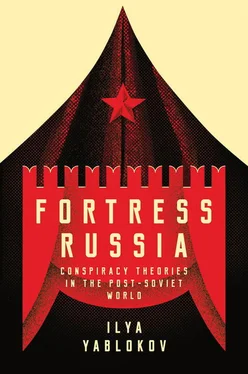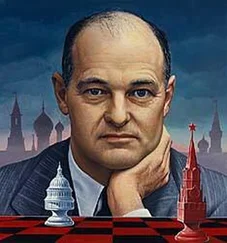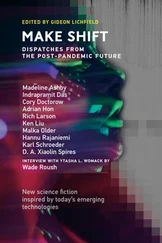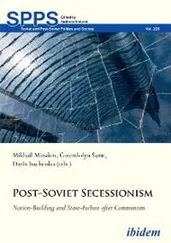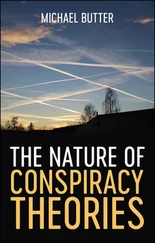However, Basyl II’s legacy was soon squandered by his corrupt and weak successors, who, most importantly, allowed the emergence of a ‘national question’ in this multi-ethnic empire. Hence one of the most important issues in the film is the collapse of the Byzantine empire due to a foreign conspiracy. Apparently, this has been taken by the film’s authors as a covert reference to the Soviet collapse.
According to Tikhon, the multi-ethnic people of the Byzantine Empire lived in harmony, unified by Orthodox Christianity. The West, which he depicted as rude and greedy, despised this attachment to Orthodox Christianity and wanted to break the empire up into nation states. Its promotion of the idea of the nation state convinced the Greeks, ‘the state-forming nation’, that they should claim independence from other nations. As a result, the Balkan region became a battleground of different religious groups, whose calls for independence were supported by the West.
This portrayal of the ethnic situation in the Byzantine Empire is accompanied in the film by impressive pictures which connects the events of the Byzantine past with post-Soviet history. In one episode, a map of the empire shows an independent Serbia and Bulgaria respectively coloured yellow and blue, which implicitly makes reference to the Ukrainian national flag. At the same time, the concept of ‘enmity’ within the empire is visually reinforced by images of people fighting, of oranges falling on the street, and of a man calmly walking along with his face covered by a Venetian carnival mask – a clear reference to the Americans in the post-Soviet countries. Moreover, to emphasize the comparison with the USA, Tikhon describes Venice as the ‘New York of the 13th century’ (Archimandrite Tikhon (Shevkunov), 2008).
This interpretation of the Byzantine collapse makes implicit reference to both the Soviet collapse as described by Surkov, and to current political developments in the CIS. It should also be noted that Tikhon depicted the West as a single entity, a competitor which was ‘only pursuing its own interests’ (Archimandrite Tikhon (Shevkunov), 2008). This narrative thread, repeated several times throughout the film, has its origins in Surkov’s conceptualization. This use of anti-Western conspiracy theories in a prime-time television programme was again aimed at moving the anti-Western conspiracy narrative into the mainstream of Russian political discourse.
The film departed from Surkov’s approach in one respect, however. This was its emphasis on Orthodox Christianity as the foundation of Byzantine and, by association, Russian identity. It was the growth and domination of pro-Western views among Byzantine intellectuals that supposedly destroyed their community cohesion. For this reason, the Turks were able to conquer the empire, while the West offered it no help in resisting them. The visual background to this point was a painting depicting Judas kissing Jesus. According to the film, the legitimacy of the imperial heritage and Byzantine greatness were transferred to Russia through Orthodox Christianity. Hence Tikhon explicitly refers to ‘Moscow [as] the Third Rome’, stressing Russia’s messianic role in world history. To make this point, he draws on a large body of pre-revolutionary ideas which were largely based on Orthodox beliefs, and which have been sporadically disseminated in popular literature and post-Soviet pseudo-historic research. Using some of Surkov’s concepts allowed Tikhon to depict Orthodox Christianity as a necessary, but just one, marker of national identification.
Most of the public speakers – intellectuals and media professionals – who expressed support to Tikhon’s film emphasized the political, cultural and spiritual similarities between Russia and the Byzantine Empire, noting his references to the impact of the ‘Byzantine heritage’ on Russian history. Narochnitskaia – an active participant in discussions about the film – claimed that Byzantium was Russia’s foremother. She referred to Arnold Toynbee’s essay, Russia’s Byzantine Heritage (1947, pp. 82–95), in which he argued that Russians as well as Byzantines always had to try to protect themselves from the Western conqueror, Narochnitskaia maintained that Toynbee, an acknowledged Western historian, had discovered the cause of the West’s contempt for Russia. The Byzantine heritage made Russia a powerful actor in global politics and the centre of a significant non-Western civilization. The debates about the film, in Narochnitskaia’s view, demonstrated the timeliness of defining Russia’s national idea (Narochnitskaia, 2008).
Tikhon’s film was shown again on 9 February 2008 on the talk show Natsional’nyi interes ( The National Interest ) on the channel Rossiia; it was hosted by Dmitrii Kiselev, who would soon become the mouthpiece of state-produced conspiracy theories. The film was followed by an organized discussion in which both Tikhon and Narochnitskaia took part. Narochnitskaia emphasized that the Russians were a particularly spiritual people in comparison to those in the West, and this had led them to think about their nation’s world mission as soon as the ‘famine’ ( golod ) of the 1990s had been resolved. Tikhon argued that liberal freedoms became an instrument of suppression in Russia, and that the West used them to pursue its economic goals in relation to the country ( Natsional’nyi interes , 2008). Four of the five guests agreed that the way to build a strong nation was to recreate the Russian empire; only this could tie the Russian nation together.
Tikhon’s film and the subsequent discussion were examples of the instrumental use of Christianity in shaping the vision of the Russian nation. While we cannot know for sure because such information is not in the public domain, it is likely that the Kremlin exploited Russians’ trust in the Orthodox Church to promote its political agenda. Sociological research carried out in 2008 demonstrated that approximately 65 per cent of the population trusted the Church, and that this was seen by the Kremlin as an attractive resource which it could utilize (Gudkov et al., 2008, pp. 28–9). Having a priest as the film’s narrator served to indicate that Orthodoxy was one of the crucial markers of Russian national identity. However, the religious components of national identity, as identified both in the film and in the discussion, were overlaid with the ideas circulating in current politics. In the talk show, there was virtually no discussion of the impact of Orthodoxy on the Russian identity; the guests were more concerned with criticizing the Russian opposition and the West. The appeal to Orthodoxy hence appears to have been another element in the Kremlin’s somewhat ambiguous nation-building agenda; it was using public trust in the Church to help develop social cohesion. It is worth noting that the attempt to promote the Kremln’s model of nation-building was articulated through anti-Western conspiracy theories and broadcast prime-time on the major state television channel. This Kremlin approach to developing social cohesion, as we shall see, was even more evident during the campaign against Pussy Riot in 2012.
Pussy Riot: Making a Nation of the ‘Soviet Orthodox People’
Using the narrative of conspiracy in relation to the Orthodox religion became an important trope at the time of the 2012 presidential campaign. Patriarch Kirill stated, in his address on 7 January 2012, that the Russians’ strong faith caused their enemies and ill-wishers to hate them (Revenko, 2012). This address made it clear that Kirill was actively involved in Putin’s campaign; this made him the butt of much criticism, with the performance by the band Pussy Riot dealing the most controversial attack.
Читать дальше
Конец ознакомительного отрывка
Купить книгу
